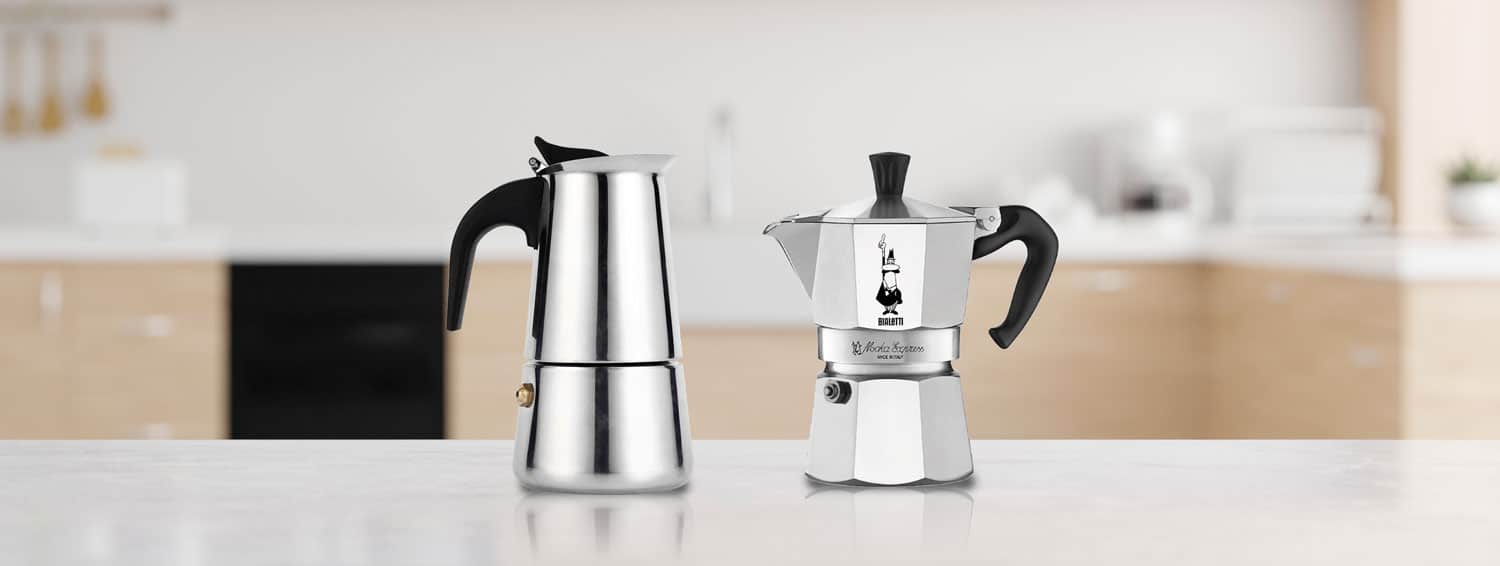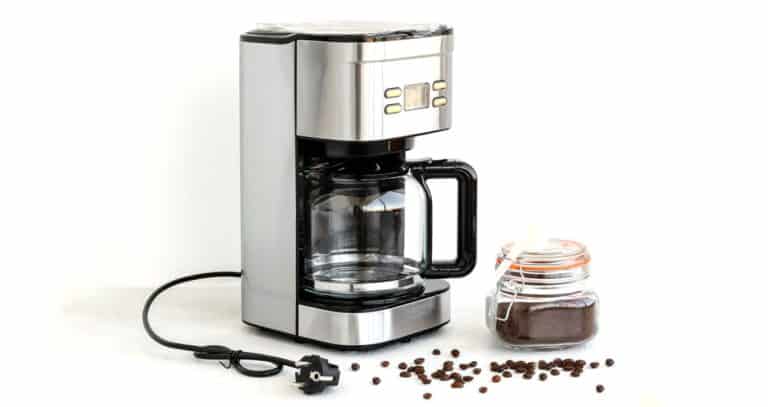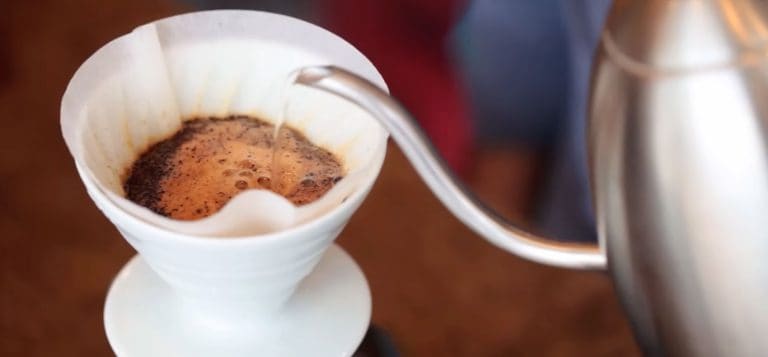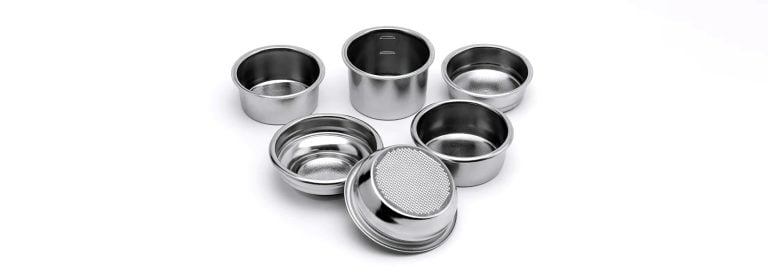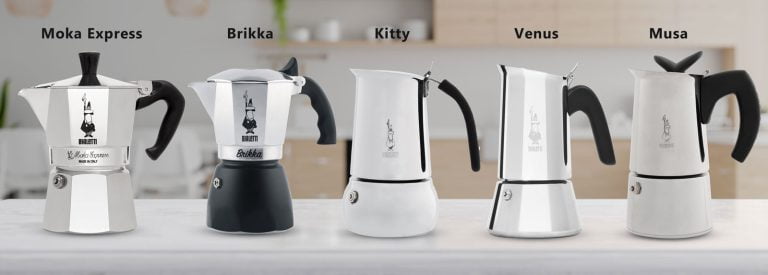Settling the Difference: Aluminum vs Stainless Steel Moka Pots
You’ve come across Moka pots because you want to brew coffee outside of the standard drip and espresso machines.
It’s always exciting to buy one, but now you have to decide between an aluminum or stainless steel model.
Read on to see what the exact differences are and get the Moka coffee brew you’ve always wanted.
What is a Moka Pot
The Moka pot is a coffee maker first introduced by Alfonso Bialetti Moka in 1933. It was initially called Moka express because of its ease of use and potential to make strong, espresso-like coffee in just a few minutes.
This stovetop espresso maker uses steam pressure to push boiling water up to the upper coffee grind chamber where the brewing then takes place. The water eventually goes through the coffee grounds and the top chamber slowly fills up.
With its profound impact on coffee-brewing culture, more and more versions of the Moka pot were created over the years.
They are almost always made of:
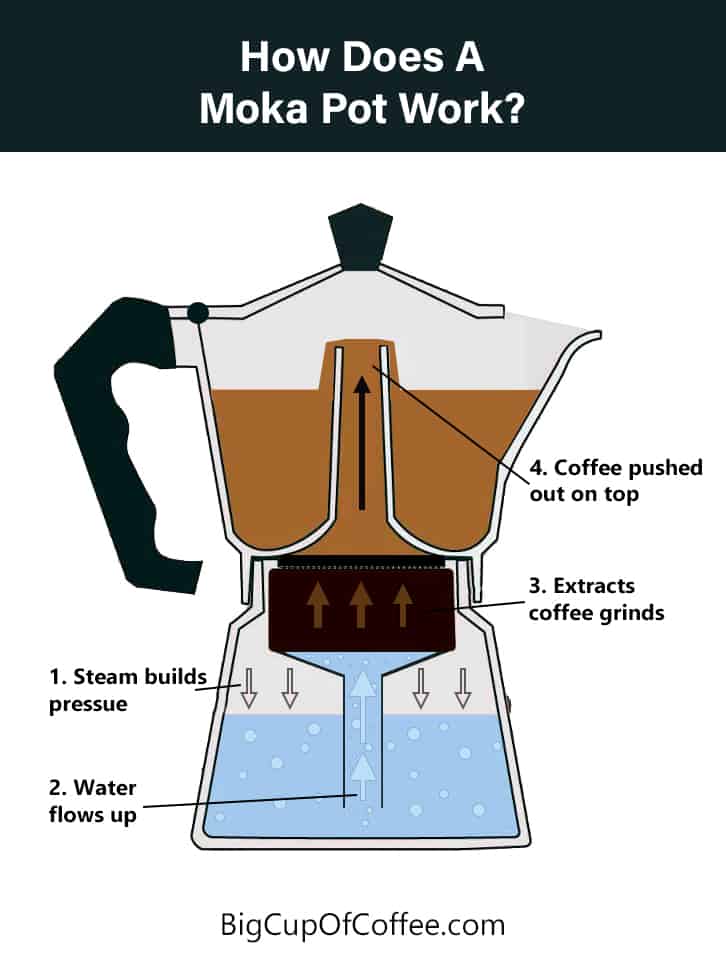
The Difference Between Aluminum and Stainless Steel Moka Pots
From brewing to cleaning and maintenance, there are numerous crucial differences to consider when handling aluminum and stainless steel pots.
While a Moka pot made from aluminum is less expensive, for example, you have to be more careful when cleaning it. A stainless steel pot may be sturdy, but it won’t conduct heat as well as an aluminum one.
Let’s learn about each of these in even more detail.
Aluminum Moka Pot Pros and Cons
The original Bialetti Moka pot was made of aluminum, as are the majority of Moka pots being made today.
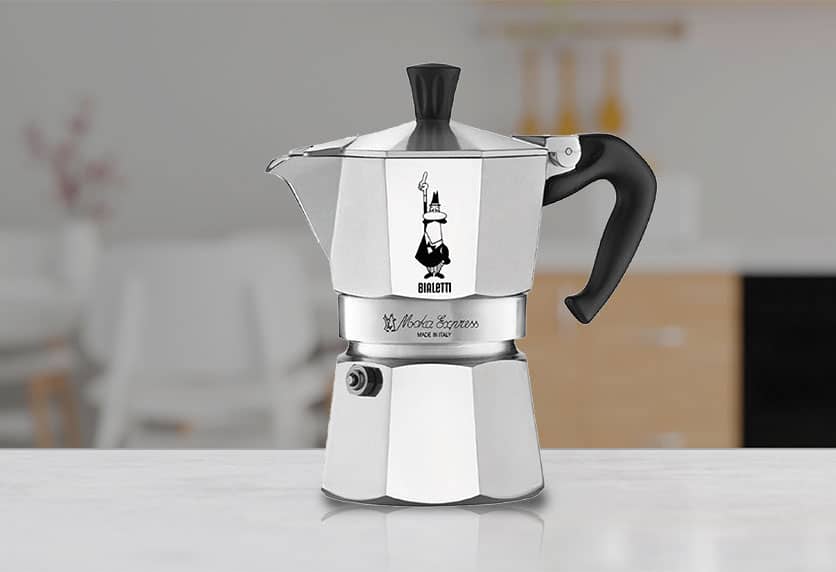
It is said to have been chosen by Bialetti due to the material’s ability to distribute heat and how well it responds to temperature change.
In terms of use, aluminum pots are great because:
- Aluminum conducts heat better – Your kitchen appliances are naturally designed to have good heat conduction. So, an aluminum Moka pot that consistently distributes heat evenly when brewing is necessary to produce a delicious cup of coffee.
- Aluminum is light – This is another reason why aluminum is commonly used in many products we use today. It makes aluminum pots more portable and handy regardless if you’re using them at home or bringing it for a trip.
- Aluminum is less expensive – You can easily find aluminum stovetop espresso makers that are cheaper than their stainless steel counterparts.
Conversely, here are some disadvantages to aluminum moka pots:
- They need better care and maintenance – Aluminum Moka pots tend to oxidize, so they need a little more caution when cleaning. You can’t put it in a dishwasher, and if you’ve just bought one, run it through a few brew cycles first but throw out the content. This is to “flush out” any manufacturing components still in the pot.
- You can’t use induction stoves – Induction stoves function using electrical induction, unlike regular burners that use thermal heat. Since aluminum is not a magnetic material, you won’t be able to put it on induction stoves.
Safety Concerns
As mentioned earlier, aluminum has amazing heat conduction properties, so it is typically used for cookware and utensils. However, there are a few who believe that aluminum could have negative effects on the human body.
They also fear aluminum leaching into coffee when using Moka pots.
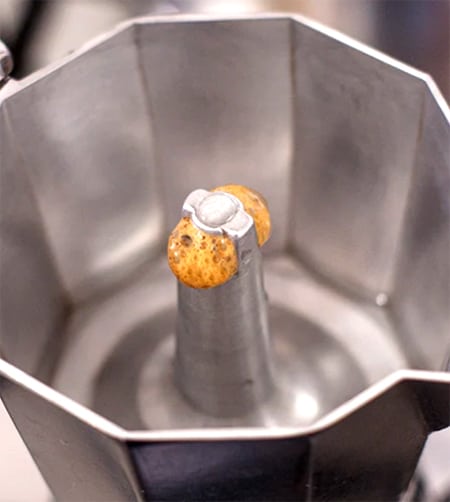
Of course, this is valid since in some cases, high exposure to aluminum dust has been observed to cause short- and long-term problems like Alzheimer’s Disease.
When it comes to your common household materials, though, studies have shown that such little exposure is negligible. Most aluminum cookware has been anodized which means they have been processed to become non-reactive.
Simply put, your Aluminum Bialetti pot is not toxic!
While its material is more reactive compared to stainless steel, the make-up of elements used to create the pot releases no toxic substances.
Stainless Steel Moka Pot Pros and Cons
The stainless steel Moka pot is your other option if you want to get a stovetop espresso maker. These Moka pots are known to be more durable and, of course, eliminate fears of toxicity.

Even though stainless steel models came much later than the aluminum ones, it does fill the gaps that aluminum models have left. Here are the advantages of choosing one:
- They last longer – stainless steel Moka pots are more durable. With proper care and maintenance, stainless steel ones can easily last for ten years.
- They are easier to clean – compared to pots made from aluminum, you can use detergents and put them in the dishwasher freely.
- You won’t get a metallic taste – you won’t need to run brew cycles. You can essentially give it a quick wash before using, and you’re good to go.
- Induction-compatible – If you have an induction stovetop at home, stainless steel Moka pots will work, while aluminum ones will not.
Stainless steel Moka pots do come with their drawbacks as well:
- Aluminum is still a better heat conductor – Again, proper heat conduction is needed for getting the right brews. Of course, stainless steel options are still viable but just don’t conduct heat as well as aluminum specifically does.
- They cost more – Stainless steel Moka pots are unfortunately more expensive. Although you can consider it a future investment because of its durability and longevity.
Which is Safer?
All Moka pots, whether they be aluminum or stainless steel, function the same way: the hot water steam creates pressure, which forces the water up through the pot. The main safety feature in both cases is the pressure release valve, which opens when pressure is too high.
One version of the Moka pot is not safer than the other.
The quality of products depends on the manufacturer. They will normally be checked before they are sent, but you know what they say. You get what you pay for. Bialetti aluminum and stainless steel Moka pots are known for their quality, knock-offs I’m not so sure about.
If you’re also worried about stories of the Moka pot exploding, yes it can, but it’s very unlikely to happen to you if you’re using your Moka pot properly. Read more about it here.
As long as you know how to clean your Moka pot properly and maintain its integrity for the long term, you’ll rarely run into any problems.
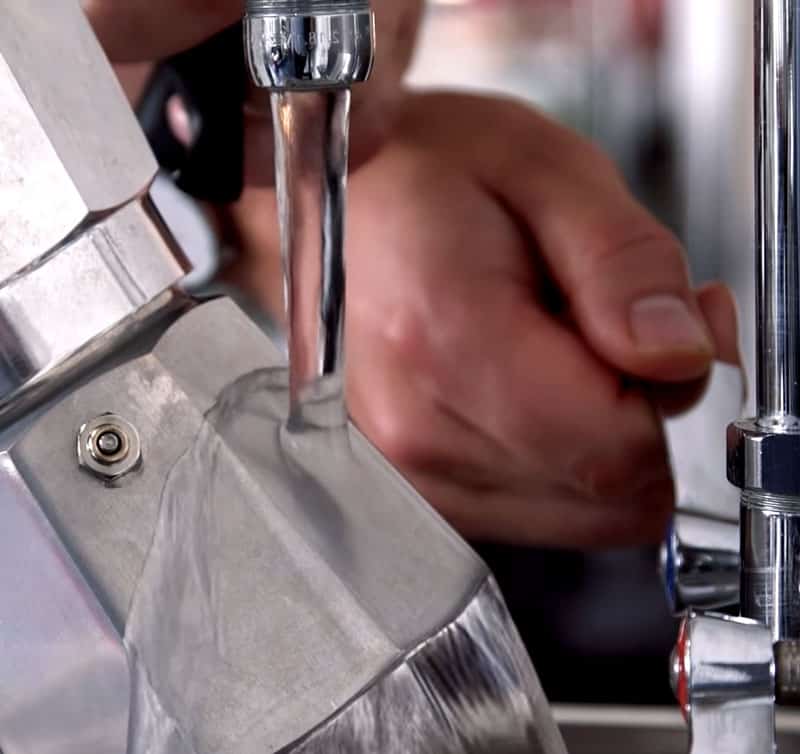
Which Is More Convenient?
As you’ve just learned, both stainless steel and aluminum Moka pots have their pros and cons. It’s up to you to decide which one is more convenient depending on your own needs.
- Do you like to go camping or want to have a portable pot? Or would you want one that does not corrode and is more durable?
- You also have to consider the stove itself. You don’t want to accidentally purchase an aluminum coffee maker if you use an induction stovetop at home.
- In terms of flavor, a lot of people would say that the even heat distribution of aluminum Moka pots allows one to brew delicious coffee more consistently. But to be honest, having tried both side-by-side, I can’t tell the difference at all.
- Factors like the type and roast of your coffee beans, and the water quality have more influence on the taste of your coffee than the material of the Moka pot.
Conclusion
Stovetop coffee makers come in all sizes and designs. To be honest, you don’t need to overcomplicate things and just choose the Moka pot that will best suit your needs.
However, I’ve intended for this series of Moka pot guides to help you make the best decisions when it comes to buying one.
Here is how to use a Moka pot, you should probably read that as well.
And please tell me which one you chose in a comment below.

